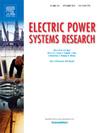Application of fixed and mobile battery energy storage flexibilities in robust operation of two-way active distribution network
IF 3.3
3区 工程技术
Q2 ENGINEERING, ELECTRICAL & ELECTRONIC
引用次数: 0
Abstract
The use of flexibilities in the electricity distribution network is aimed at achieving more optimal operation of this network. One of the methods of using flexibility is using energy storage systems. In the operation of the distribution network with variable tariff, energy storage systems create flexibility in the network by charging in off-peak hours and discharging in peak hours. Batteries, which are the most widely used storage systems in the electricity distribution network for the operation of this network, are divided into two categories: fixed and mobile batteries. In fixed batteries, the installation location of the battery is already known, but in mobile batteries, the battery is transported on a truck and its location changes according to the operation, which is spatial-temporal flexibility of mobile batteries, and their location is determined according to the parking lots created to stop the truck. In this paper, the formulation of two-way distribution network operation in the presence of fixed and mobile batteries is presented. In the presented formulation, firstly, the model of fixed and mobile batteries is presented, and then it is aggregated in the problem of operation of two-way distribution network. The spatial-temporal flexibility of a mobile battery is a feature that allows for various applications. Unlike a fixed battery that only has temporal flexibility, in a mobile battery both temporal and spatial flexibility exist and are formulated. In the presented model, the robust optimization method is used to model the uncertainties of the problem. Finally, simulations on the IEEE 33-bus network have been presented to prove the capability of the presented model and the flexibility used. Considering 4 general states without fixed and mobile batteries, despite the fixed battery, despite the mobile battery and despite simultaneous both types of fixed and mobile batteries, in 3 cases, feeding from bus 1, feeding from bus 33 and feeding from both sides, the indices of the objective function value of the problem, the apparent power peak of the network and the active power losses have been investigated, which shows the effectiveness of using the flexibility mentioned in this paper. The value of the objective function, active power losses, and the apparent power peak of the network by using both types of storage devices in the network from both sides of supply has been reduced by 12, 70, and 13 percent, respectively, compared to the case where none of the storage devices were used.

求助全文
约1分钟内获得全文
求助全文
来源期刊

Electric Power Systems Research
工程技术-工程:电子与电气
CiteScore
7.50
自引率
17.90%
发文量
963
审稿时长
3.8 months
期刊介绍:
Electric Power Systems Research is an international medium for the publication of original papers concerned with the generation, transmission, distribution and utilization of electrical energy. The journal aims at presenting important results of work in this field, whether in the form of applied research, development of new procedures or components, orginal application of existing knowledge or new designapproaches. The scope of Electric Power Systems Research is broad, encompassing all aspects of electric power systems. The following list of topics is not intended to be exhaustive, but rather to indicate topics that fall within the journal purview.
• Generation techniques ranging from advances in conventional electromechanical methods, through nuclear power generation, to renewable energy generation.
• Transmission, spanning the broad area from UHV (ac and dc) to network operation and protection, line routing and design.
• Substation work: equipment design, protection and control systems.
• Distribution techniques, equipment development, and smart grids.
• The utilization area from energy efficiency to distributed load levelling techniques.
• Systems studies including control techniques, planning, optimization methods, stability, security assessment and insulation coordination.
 求助内容:
求助内容: 应助结果提醒方式:
应助结果提醒方式:


